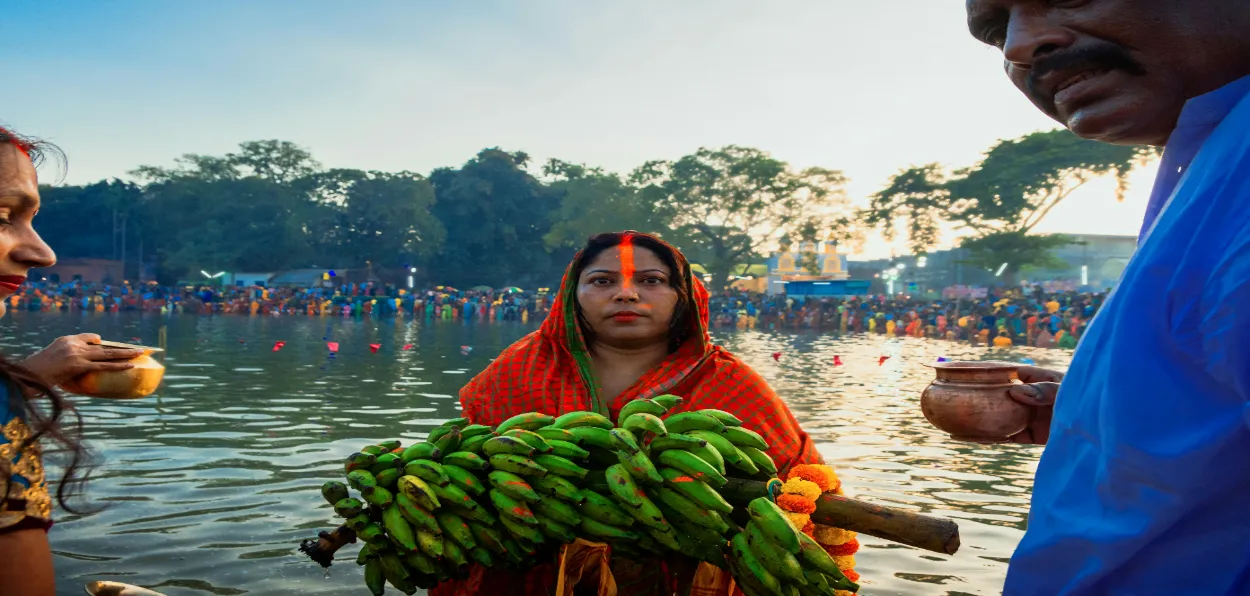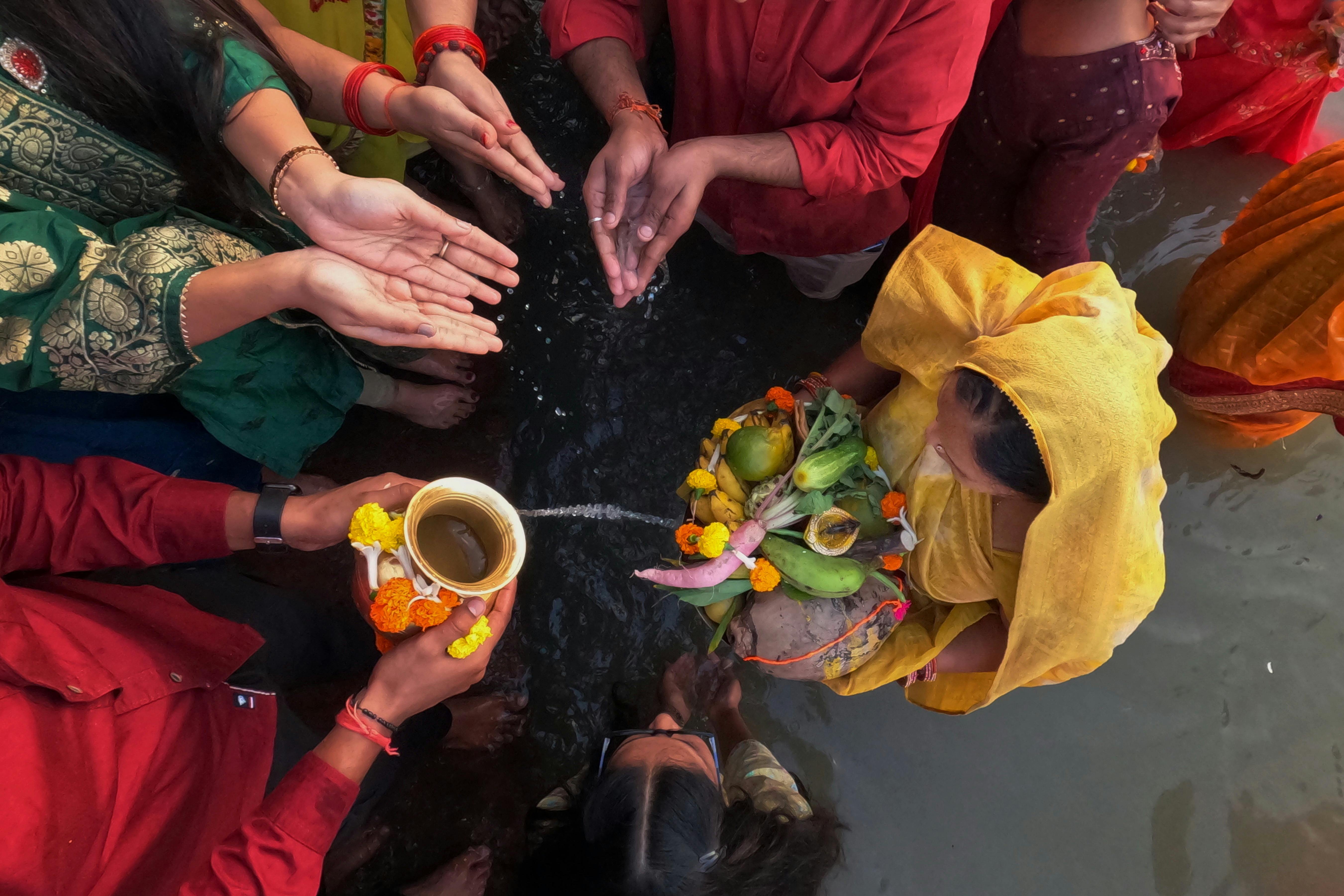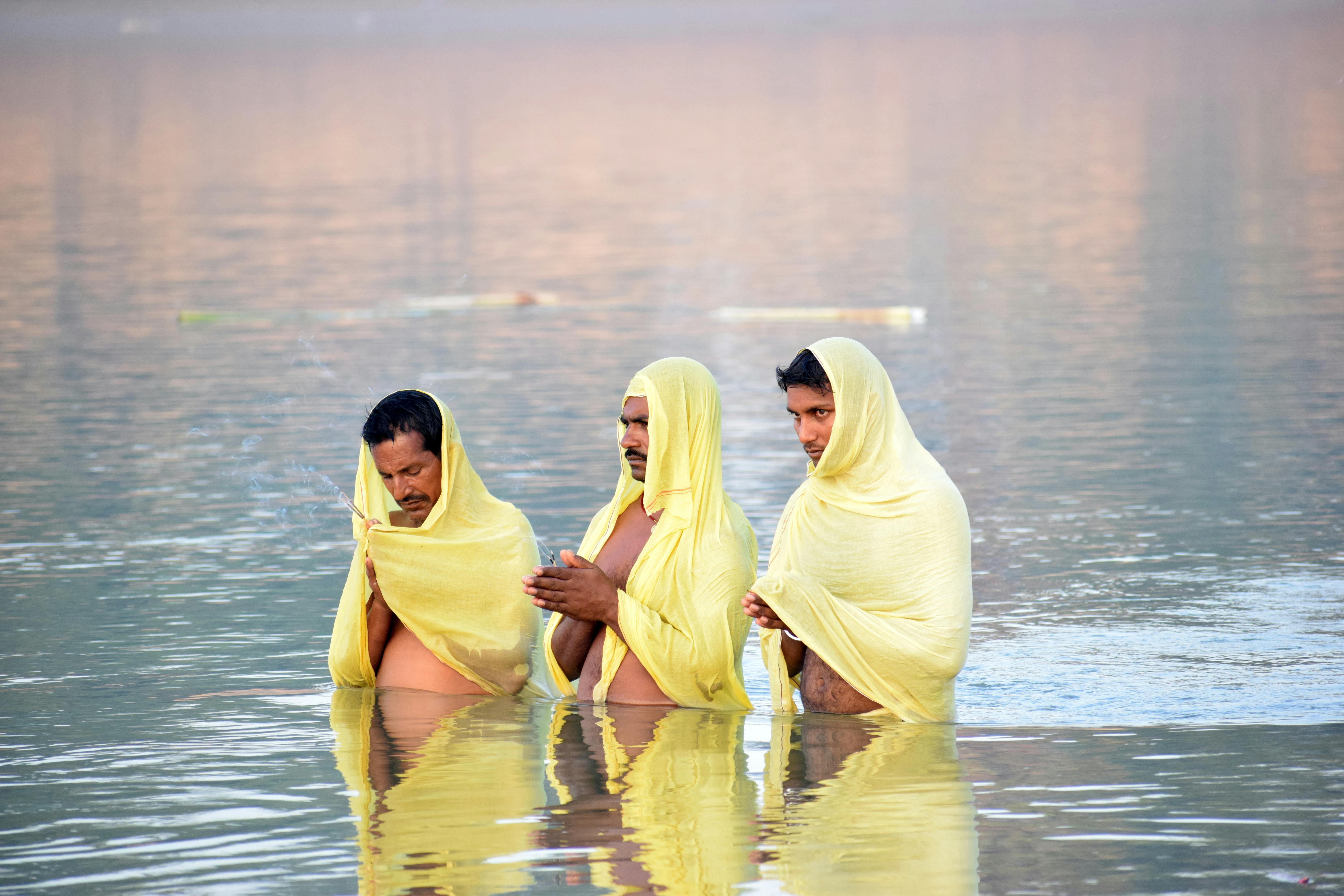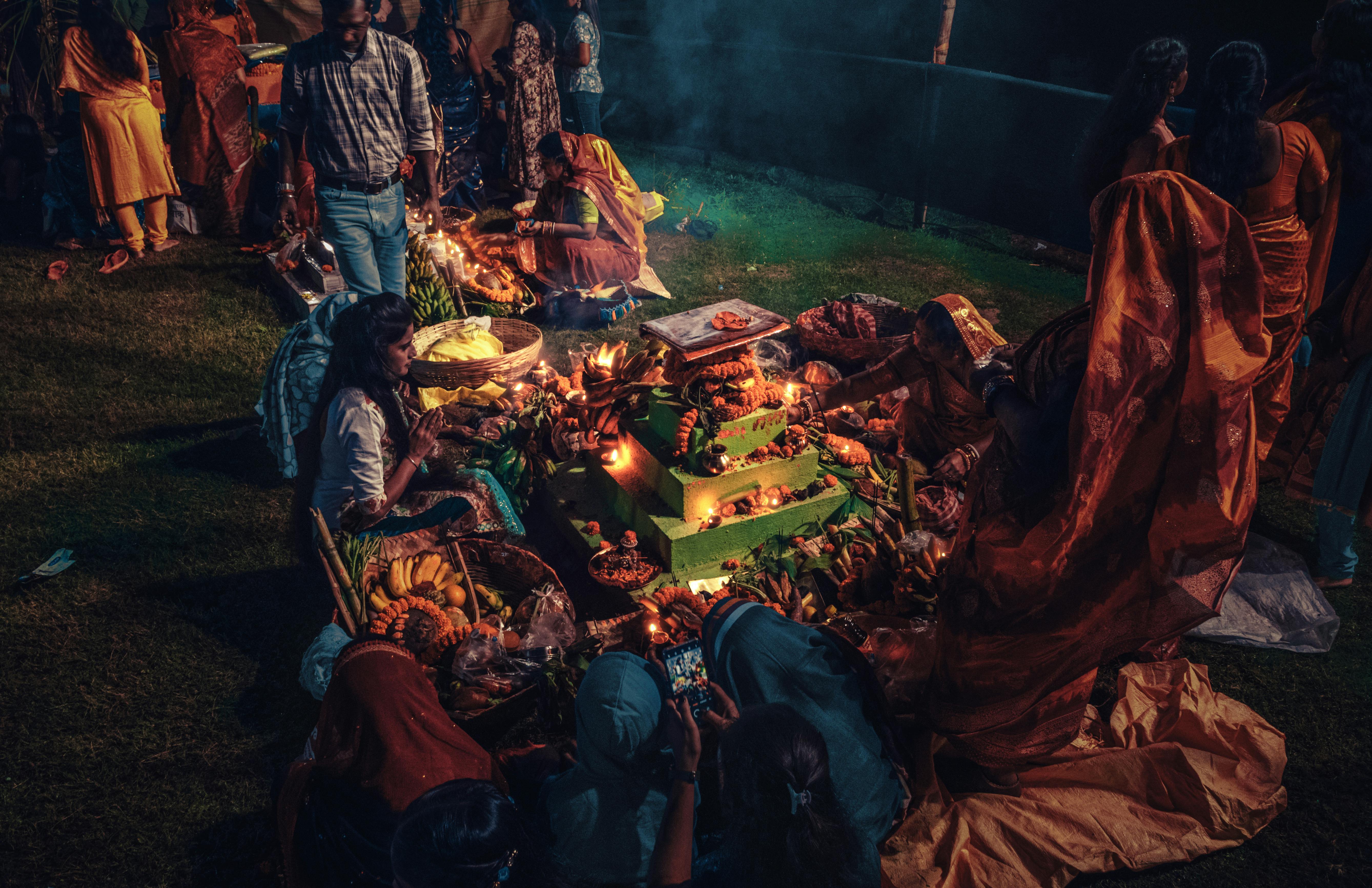
Manjit Thakur
The Chhath festival, primarily celebrated in Bihar, Jharkhand, Purvanchal, and surrounding regions, sparks curiosity about the festival’s origins and meaning. If the festival is dedicated to the Sun, why are the songs related to it in praise of Chhathi Maiya (A feminine deity)?
Indeed, this is a festival of sun worship, and it involves worshipping not only the rising sun but also the setting sun. It requires no priest or rituals to make an offering to the Sun or pray, and is a community festival.
As the offerings of fruits, vegetables, and other materials are essentially of local origins, it is inferred that this festival has its origins in the "pre-civilizational" era. Perhaps this is why people of all castes and creeds participate in it.
India’s eastern flank has many such deep-rooted festivals. In Mithla region (Bihar), festivals of Judha-Sheetal, Holi, or Baisakhi, related to agriculture, are celebrated uniquely.
It’s possible that these festivals were later incorporated into Vedic literature. Many people also associate Chhath with mythological stories, but the absence of priests and the minimal rituals during the puja prove that Chhath is not a festival of classical tradition but was born out of popular culture.
Hindi writer Ramdhari Singh Dinkar, in his book "Four Chapters of Culture," suggests that such festivals may have been introduced into Aryan culture by non-Aryan and tribal women whom the Aryans married after arriving in these regions.
 Women offering bounties of Nature to Sun as thanksgiving on Chhath
Women offering bounties of Nature to Sun as thanksgiving on Chhath
However, tribal people were nature worshippers, but it is doubtful whether they also worshipped the Sun! The Sun was the Aryan god!
According to social analyst Sushant Jha, one theory associated with Chhath is also linked to the Shakaldvipi Brahmins, who today live in the Magadha and Bhojpur regions of Bihar and eastern Uttar Pradesh. They came to India from the island of Shak, modern-day Iran.
It is said that at some point in history, these people migrated from Magadha to the Shakas, and hence were called Magas. Latin texts also refer to a tribe of ancient Iranian inhabitants as Magi, who were sun worshippers.
It may not be a coincidence that the Persians, who are of Iranian origin, are also sun worshippers.
How did the Shakaldeepi Brahmins come to Bihar from Iran? Sushant recounts an anecdote about Krishna's son, Samba, who contracted leprosy. Physicians advised him to perform a yajna to worship the Sun. Due to misconceptions surrounding leprosy, local Brahmins refused, so Krishna invited the Brahmins of Shakaldeepi, who were both worshippers of the Sun and physicians, to Dwarka.
They cured Samba and later settled there. Thus, a group of sun-worshippers settled in Gujarat. However, later, during the lifetime of Lord Krishna, when Dwaraka sank into the sea, the Shaka-dweep Brahmins settled in the areas of Magadha, which was resurging after the Mahabharata period.

Men praying to the Sun on Chhath
These are the same Brahmins who built a series of Sun temples south of the Ganges, and their priests are these Shakaldeepis. Perhaps the worship of the Sun and Chhath Puja originated at that time.
However, there is a twist in the tale. Sun worship initiated by Brahmin priests should have included Vedic mantras and rituals, but Chhath Puja doesn't!
One more thing: Bharuch in Gujarat, formerly known as Bhrigukachchha, is located on the banks of the Narmada River and was a major centre for the worship of Surya and his wife Usha.
Later, the Gurjar emperor Jayabhatta II established a massive Surya temple there. The Gurjar kings were also great Sun worshippers. This means that the Shakaldeepi Brahmins who settled in Gujarat were responsible for the popularisation of Surya worship there, which later spread to Magadha.
Recent research suggests that a chain of Surya temples existed north of the Ganges in Mithila. South of the Ganges, this chain likely reached Konark in Odisha.

Women praying to the Sun God on Chhath
The Dev of Aurangabad, the Pundarak of Patna, whose ancient name was Punyark, and the Sun temples found in many places in Jharkhand indicate this. It is true that Chhath Puja is not just celebrated in Magadha, but is also celebrated with equal devotion in Mithila. The question is, when did sun worship begin in Mithila? The question also is, how much similarity and how much difference is there between ritualistic sun worship and the worship of the river and the sun celebrated as Chhath as a folk custom?
In his book, Yugandhar, based on the Mahabharata and various Puranas, Shivaji Sawant writes that once, Krishna and Balarama had a disagreement over the Syamantak Mani, and Balarama, along with a group of his supporters, came to live in Mithila. At that time, there was a place called Pragjyotishpur, which you can consider to be present-day Guwahati and the surrounding area. After Krishna killed King Narakasura of Pragjyotishpur, he met Balarama in Mithila while returning to Dwarka and persuaded him to return.
Many of Balarama's companions settled in that region! Does the dense Yadav population in that area have any connection to that mythological event? Could this be the reason for the similarities between Maithili and Gujarati, the languages of that region? Could some of the similarities between Maithili, Bengali, Nepali, and Gujarati be rooted in that mythological event? This is a subject of extensive research.
But most importantly, if the Shakaldeepi Brahmins played a role in this, or if later kings, under their influence, built Surya temples, how does one explain the absence of mantras, rituals, and priests in Chhath Puja, and its observance by all sections of society?
There is also a Buddhist link to the festival. Surya is found in both Buddhist and Hindu traditions, and many Surya temples appear to have been built by the Buddhist kings. So, was a method of Surya worship developed that was devoid of priests and rituals, and later took the form of Chhath?

Women make an offering to the Sun
Who is Chaatti Maiya, to whom all the songs sung during the festival are dedicated?
According to religious texts and mythology, Chhathi Maiya, also known as Aditi, is the mental daughter of Brahma. She is also considered the sister of the Sun God. During the Chhath fast, Shashthi Maiya is worshipped, hence the name Chhath.
According to mythology, Brahma divided himself into two parts to create the universe. The right side took the form of man, and the left side took the form of nature. It is believed that one part of the presiding deity of nature, Prakriti Devi, is called Devasena.
Because she represents the sixth aspect of nature, one of the goddess's names is Shashthi, known as Chhathi Maiya. The festival of Chhath teaches us to love the environment, rivers, and nature.
ALSO READ: Nuruddin Ahmed sculpts Zubeen Garg’s statue to pay tributes to legendary singer
The worship of the setting sun also has a message. It makes one realise the importance of those in the twilight years of their life – the elderly in our society who may be going through a difficult phase due to age.
